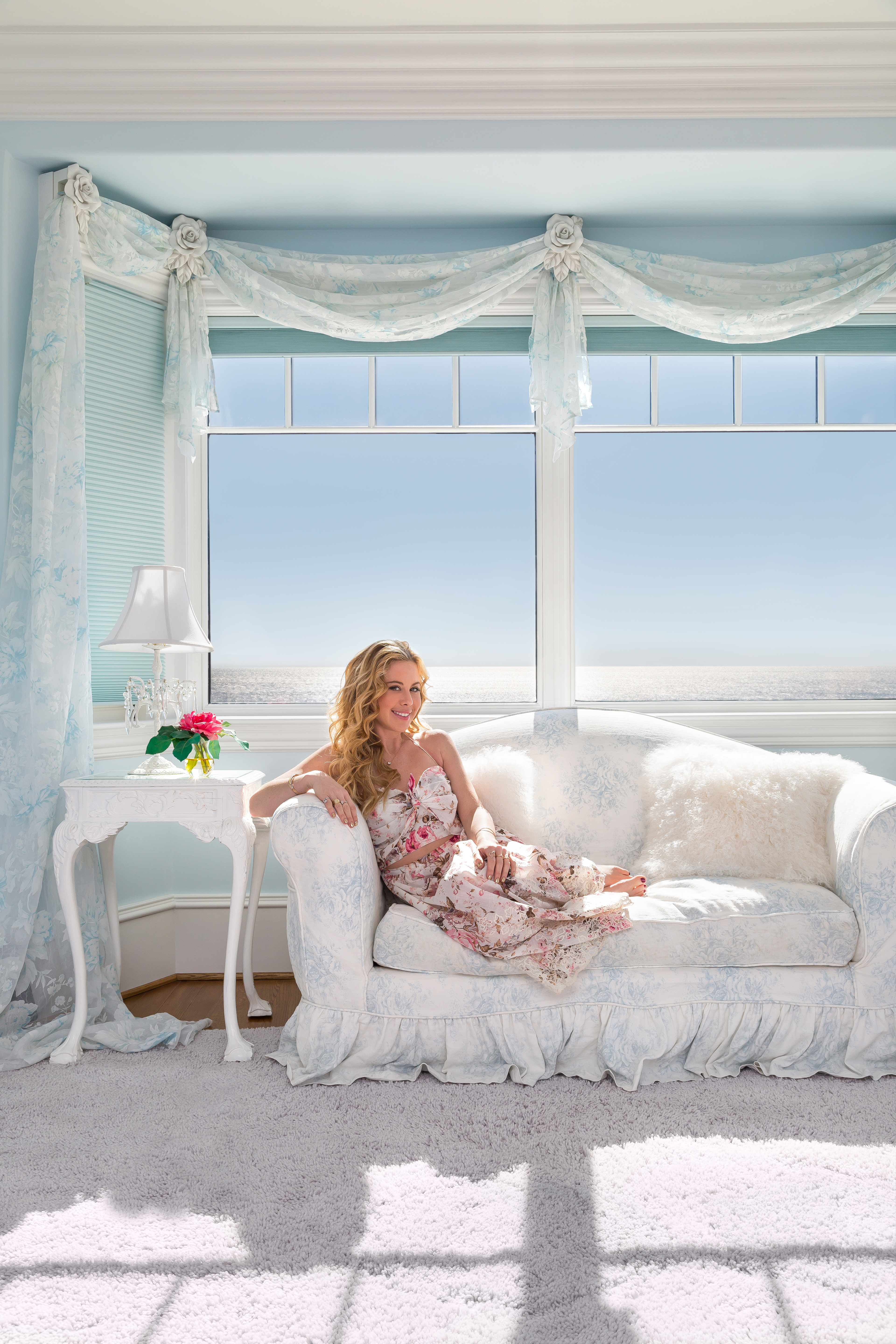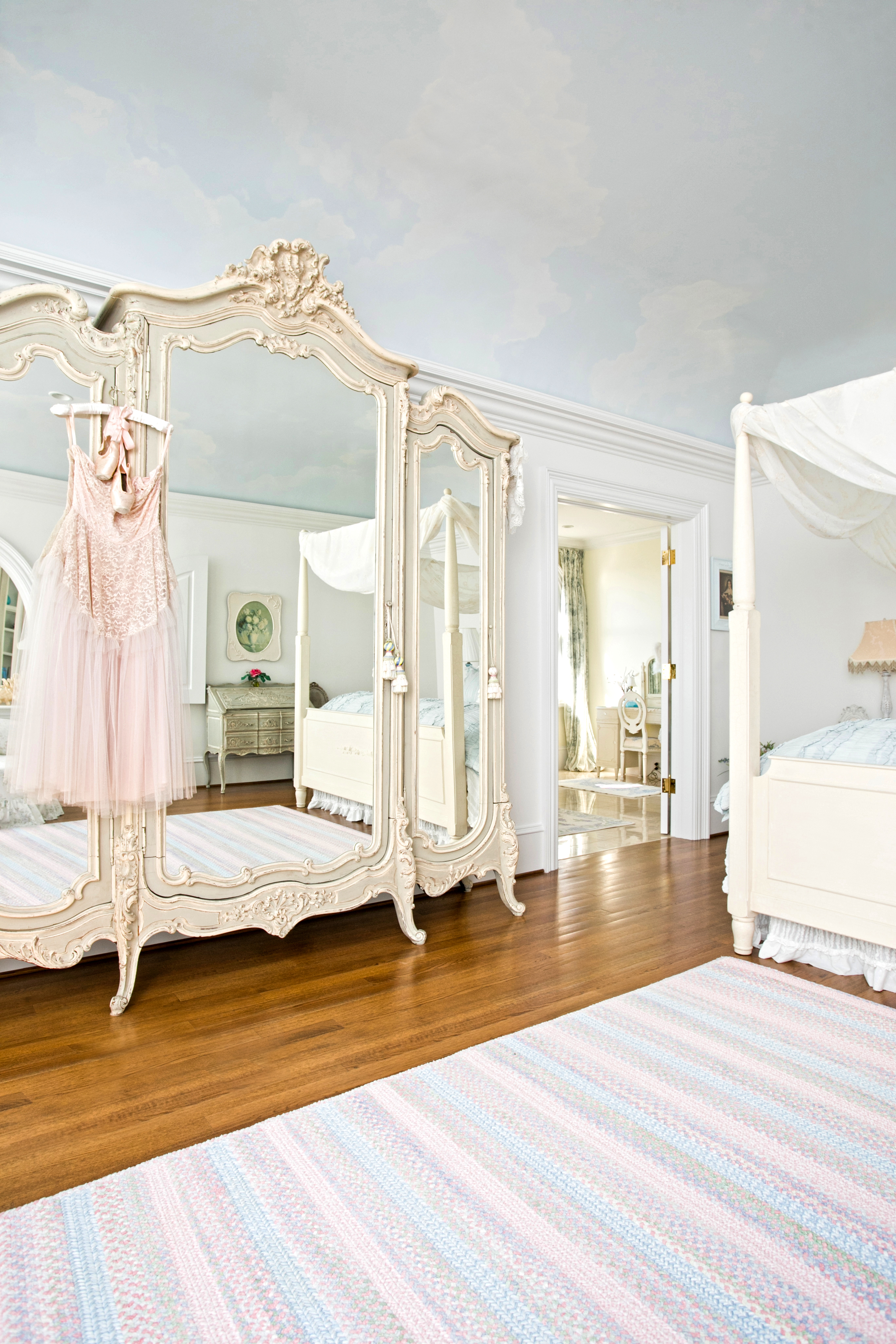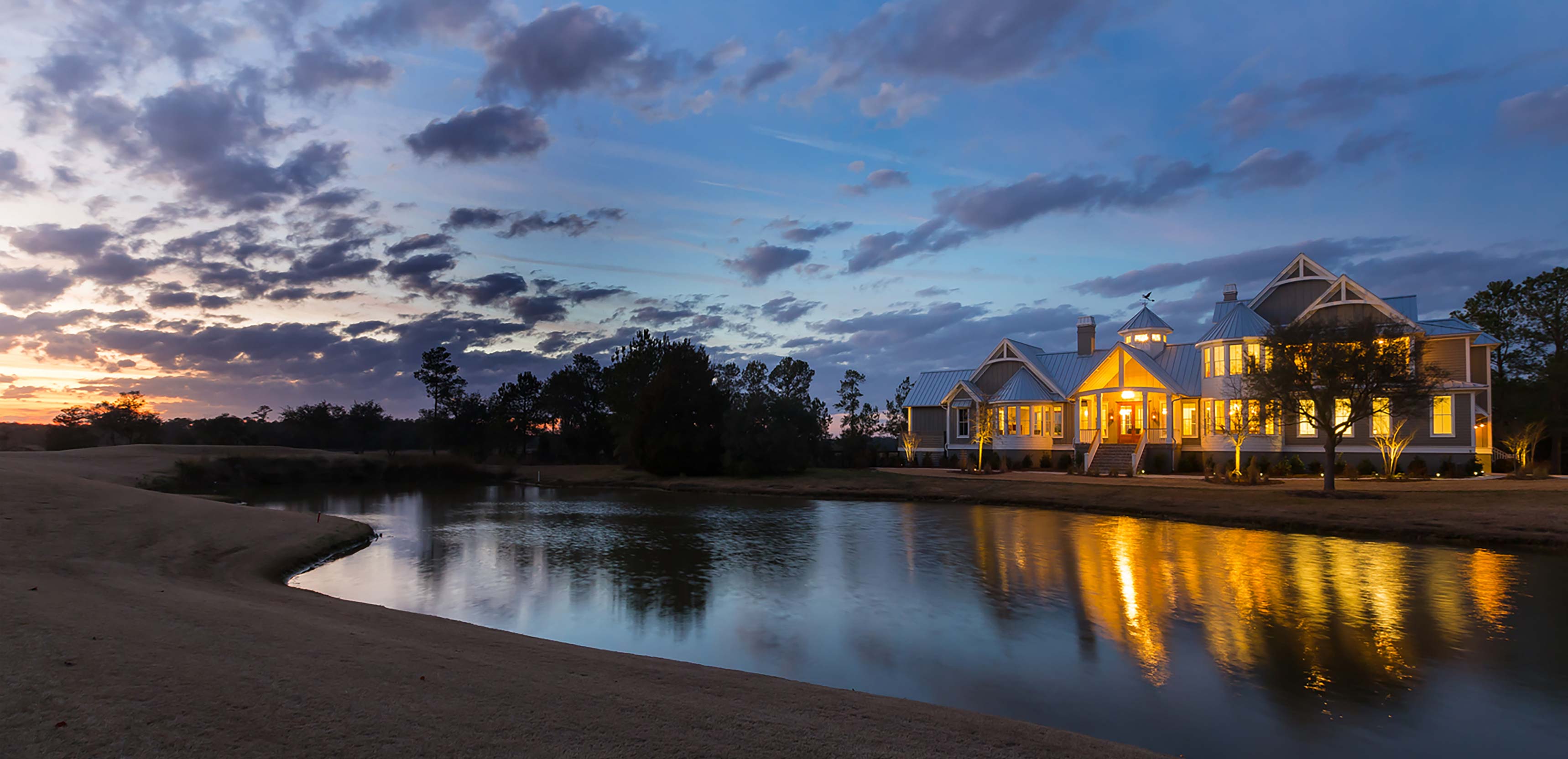
After becoming the youngest female in Olympic figure skating history to win gold, Tara Lipinski began putting down roots at the age of 14. Throughout this golden feature (pun intended) you’ll read about her story and see how her exciting life has influenced her home.
When I found out that I was going to get the chance to interview Tara Lipinski in her home, I felt a bit overwhelmed; it isn’t often that we get to sit down with childhood idols. In the 90s, sports like gymnastics and figure skating were all the rage. I remember trying to do cartwheels and spins and I would prance around my house pretending like I was one of the graceful women on television. Unfortunately, I was about as graceful as a bullfrog stuck in mud, but I didn’t care. Those powerful, hardworking, gorgeous women, seemingly doing the physically impossible in the loveliest way had me, and millions of others, captivated. I’ll never forget where I was when I watched Kerri Strug nail that final vault during the 1996 Olympics or when Tara landed gold in 1998.
After becoming the youngest female figure skater champion, Tara started building her Kiawah Island home. Throughout this oceanfront abode, you’ll find parts of her life story integrated into the architecture, décor, and ambiance. Tara’s years of success on the ice paved a foundation for her to continue to grow and evolve in her career and as a woman. She and her adorable mother were kind enough to let some of the team from Charleston Home + Design magazine in to photograph this home and hear about how she went from a social butterfly child in Texas to becoming a household name all across the country.
{For extra pictures of Tara’s home, check out the gallery at the bottom of the blog!}

Outdoor living space and being able to enjoy the views were two must-have elements for Tara when planning started. Ample windows and three levels of decking help to make those wishes a reality.
We all know about your successful career paths, but let’s start from the beginning. Where did this journey begin for you?
I was born in Philly and raised in south Jersey. I was a normal kid riding my bike around and playing with my friends. I kind of call that my hometown, but we traveled so much when I was a kid and we moved to Texas when I was nine. I’ve lived in Sugarland for forever, so it is a hometown as well; when I won the Olympics that was definitely my hometown. I guess I get confused on what my hometown is or was because I trained in Detroit, Michigan for many years leading up to the Olympics and when I was 14, I came out here to Kiawah Island.
How did you first enter the world of skating?
I started out roller skating because back in the day that was cool and I began competing in that. It was more of a social thing and I’m not sure how I started competing in it because I remember hanging out with my little girlfriends and we’d put on shows for our moms and it was just fun. Then, when I was six, I decided to give ice skating a try. Immediately I loved it and attempted to do both for a while, but it was just too much. I had to focus on ice skating because it just took over my life…you know, pursuing an Olympic dream takes time [laughs]. Really, I just spent the next ten years of my life skating.
When did it hit you that ice skating was going to be something bigger and what was that realization like?
I loved it so much when I was roller skating and ice skating because it was just a social thing for me and so much fun that competing was really just an extra added bonus. Obviously, I began to notice how much the coaches would want to work with me and I would go to these competitions and win them all. It wasn’t until I was about nine where I was like, ‘Oh, I’m probably really good. I’m winning…a lot…that’s weird. Does it mean that maybe I could possibly make it to the Olympics?’ [laughs] Eventually though, if you’re spending that much time training, even when you’re little, and practicing five days a week in a rink, you’re looking at other champions and watching others compete in the Olympics and you start to wonder.
What went through your mind when it hit you that you were going to Nagano?
It was insane. The year before I won, well three years before, I knew that it was a definite possibility, but I competed on ice, and that’s slippery, so I never knew if I was going to slip and ruin my chances by coming in eighth or if I was going to win. Also, I was competing against one of the greatest competitors at the time, Michelle Kwan, so it wasn’t an easy route and I couldn’t just call it in. My performance had to be the best so the training was very difficult for me with always trying to up the difficulty ante just to stay on top. Those three years before Nagano were exciting; I was always the youngest, but just to be on that senior level and be around all of my icons and ice skating idols while traveling the world was the best. Then I won Nationals and Worlds when I was 14 and it began this whirlwind of craziness. That’s when it really became a strong rivalry between Michelle and I leading up to the Olympics. I knew that whether I won the Olympics or not, I was going to be an Olympian; all I could think about was getting to walk in the opening ceremony. To this day I wear my Olympic ring that you get and all of that meant so much to me. Just being an Olympian and being at both opening and closing ceremonies was so amazing.
Do you have a standout memory from the Olympics?
One of my favorite moments is after I won and after all of the media events, it was probably 3 a.m. at this point, and I went to the cafeteria and Wayne Gretsky was there with all of the other hockey team members and they all started cheering! We ended up having a little ice cream party and it was just me with a ton of hockey players and Wayne Gretsky leading the way.
Who were some of your idols and how does it feel to be a role model yourself?
That is so strange to hear. You don’t realize it at the time and when I look back at other athletes, like Dominique Moceanu of gymnastics. She was like an idol and we became pen pals and friends and I just admired her. Honestly, I love my sport so much so that if I’m able to pass that passion on or encourage people to get on the ice, it is pretty cool.
As for my idols, there were so many. Scott Hamilton, Kristi Yamaguchi, Oksana Baiul are a few of them. Back then in the 90s, skating was at its peak. There was also Midori Ito and Brian Boitano. I used to go see Stars on Ice, the show that I eventually toured on. I have a picture of me in my little Blossom hat when I was eight years old getting Scott Hamilton’s autograph. It is crazy that six years later I was on that show performing with him.

Tara was gifted a show-worn costume and pointe shoes by a ballerina, which she displays on her master bedroom wardrobe.
What was it like to transition from being an amateur to a professional?
It was pretty easy. Like I mentioned before, it was the height of the figure skating popularity back in the 90s after Nancy and Tonya and there were so many opportunities for tours like the Stars on Ice tour or the made for television competitions. If I wanted to, I could’ve done both at the same time and stayed amateur, but I just really felt that I had accomplished so much. This was a hard thing for many people to accept since I was so young though. But I won Nationals, Worlds, Olympics, I had the best Olympic experience, and I skated the way that I wanted to. I wonder that if I hadn’t skated the way I wanted to that I might want a re-do or something but things did fall in line for me. I felt like the next step was something that I wanted to take, which was to perform and entertain in a different way instead of doing the every day training and then competing.
What was it like to transition away from skating?
I was so young and there were so many opportunities for me from skating then and I had a contract where I did my own special and it was really cool. I knew my experiences were something wonderful and that I was lucky enough to get them because of skating and what I had done. When I stopped skating, I still had connections and there were a lot of opportunities. Especially being a teenager at the time, getting to be able to do some of those opportunities, like Malcom in the Middle or 7th Heaven, was fun and I was really grateful for them. As I got older and stopped touring, I decided I wanted to find what was next for me. I realized that commentating and broadcasting was the next step for me, even though it was a long road to get to. It took me about five years to break into that business. I was lucky enough in 2014 for Sochi to happen with the ‘craziness of Tara and Johnny’ on the Sports Network. One day Johnny and I created a funny Instagram account for us and we went from like four followers the first night to about 30,000 the next morning. From there, we knew we had something special.
I just love the dynamic between you two.
Yes, me too! What makes it work is that we really are best friends. I don’t know what I’d do without him. I talk to him every single day. I think that is what makes what we do on air that much better and it is so hard to find.
You two have gotten to move up to primetime now, which is exciting. What is it like being a former performer and being in this new role?
Yeah, it’s just, wow; we are extremely lucky. We’ve been primetime for all US events for the past three years. I think it’s really hard for athletes to make that switch. I do remember and admire Scott Hamilton and Dick Button. I remember how Dick hated my layback and I think about stuff like that. Someone like Dick, who is like the forefather of commentators for figure skating, was able to balance the criticism with being supportive. You never felt like he hated your skating. I try to do that too, and I think Johnny does as well. It’s difficult to tell the truth, because sometimes it isn’t always nice, but I think that’s what the sport needs right now and I think that’s why people listen to us. The judging system has changed so much and is difficult to understand, and even political, that it makes it hard to follow what is happening.
Sometimes I’ve wanted a translator because things can get so technical!
Right? Yes, it can be hard to know what is happening if you’re just watching. We will explain things and give the audience what they deserve, but at the same time, I always keep performing in mind. It’s not in my personality or Johnny’s to have any meanness. We are just as truthful as we can be.
Switching gears, I’m in love with this home. What is more of the backstory for this space and some of your other properties?
When I was 14, after I won Worlds, we came out here to Kiawah because I had always loved being near the ocean. Growing up, I’d go to the ocean with my parents and we’d go to this cute little place and I would always say, ‘If I ever do well, I’m going to get a house by the ocean.’ We actually have a book upstairs where I drew a picture of my mom and me walking and I’m saying that quote. I found South Carolina through one of my tutors. She had just moved to South Carolina and she kept saying how much I’d love it. It’s so special out here and once I found Kiawah, I just knew that this place was it. I used my money from skating and bought this lot and it started my investment in real estate. It took us about four or five years to build this home.
We have had a place in Texas since I was a little girl, but this house here was mine. Later I had an apartment in Detroit when I trained and then a place in LA and one in New York in the West Village. Eventually, I was switching between LA and New York and spending summers out here, and as work got busier, being out here became my sanctuary. Before I began commentating, I would spend about six months at a time out here and I never got bored. I love Charleston and this Lowcountry lifestyle. The beaches are beautiful, the water is warm, and the weather is gorgeous. I’m thankful that winning the Olympics gave me the opportunity to build this home. That’s why this house means so much to me. I just love it here.

For Tara and her friends, the kitchen is a main gathering place. The large wooden island allows for her and her group of friends to all gather around and hangout during their annual girls trip.
What were some of your design priorities and must haves for this home?
Windows! I just had to have lots of windows so I could see this view. I wanted that Southern feel with all of the porches because I’m never inside when the weather is pretty. I have a Jacuzzi on my top floor, which is something I really wanted. When I was 14, after watching Clueless I really thought I needed one of those motorized closets and my parents tried to talk me out of it, but I did it anyway. I never use it at all. The back is just for storage. The other must-have element was Paris. You’ll see influences of it throughout the house. I was out there for a while doing this movie then and my best friend came out for the summer while I was filming. I was 19 and it was such a special experience for me to be able to travel like that; it was this life changing experience and I always wanted to remember that.
I see the French influence for sure. You’ve filled the home so nicely. How did the style come together?
First, I love antiquing. My mom got me into that. I think I have a really eclectic look honestly. I don’t like too much of any one thing. There is some gold, but not a lot. Really, I like the romantic look and I thought that the colors of that theme, with blues and whites, fit the coastal look here. Even though this is a beach house, I didn’t want to just put up shells everywhere.
What is your favorite space in this home?
The kitchen. There’s this whole house and that is where we go. Every year my girlfriends, all nine of us, come together here on July 4th and we realize that we just stay in the kitchen or by the pool. My room is nice as well. That view is pretty great to wake up to.
What other plans do you see for your life moving forward?
I have so many dreams and I always try to put too many things on my plate. I’m also working overseas on a skating show that isn’t an actual skating show; it’s more of an immersive show like a Queen of the Night or a Sleep No More. It has a sexier, cooler vibe for a night out. Skating would be the base of it, but it would have actors and dancers. I’ve been working on that for four years. Then, obviously, there is the commentating that Johnny and I are doing along with our other projects together outside of the booth.
